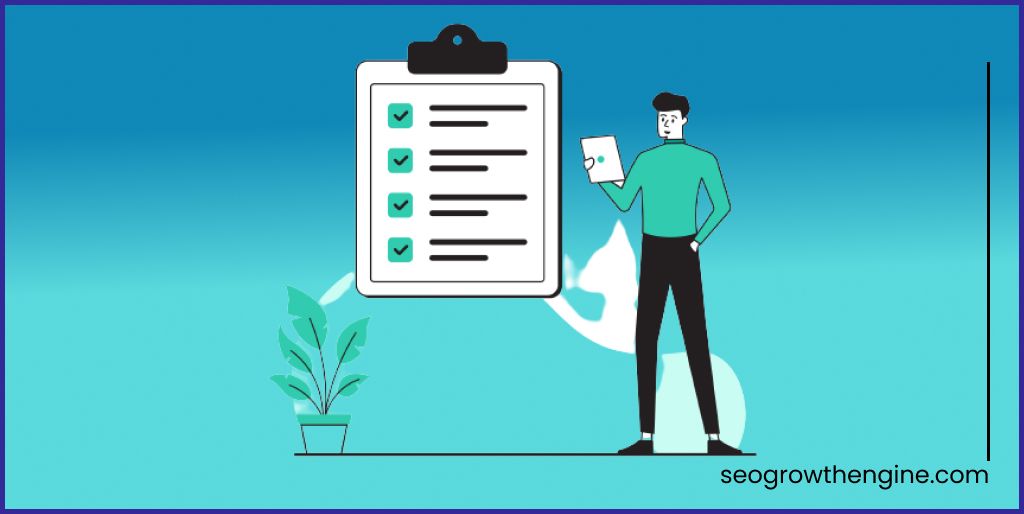There was a time when using either HTTP or HTTPS certification on your website didn’t really matter too much. However, the entire scenario changed when Google decided to launch “version 68” of Google Chrome with a simple tweak. If your website does not complete the HTTP to HTTPS migration, it will not be marked as “secure” on Google.
Now, this issue might lead to several questions –
- Will the procedure of HTTP to HTTPS migration WordPress help you rank higher on Google?
- Is it worth going through such hardships and making the switch?
- Does Google value SSL certification more than technical SEO?
In this article, we have discussed whether executing a well-prepared migration plan HTTP to HTTPS works for SEO or not. Besides, we will also share how you can streamline the process within a few steps.
So, without making any further ado, let’s jump on the topic right away!
HTTPS And SSL Certificate – An Overview

We’ll try to keep it as short and concise as possible. If you aren’t a tech-savvy person, cryptography will not be too easy to digest for you. However, not having a general idea on the topic will not help you understand its importance anyway.
So, if you have any queries regarding this subject, make sure to inform us about them through the “comments” section. We will try our best to reply to you as soon as possible.
Anyway, let’s get back to our topic for now.
What Is HTTPS?
HTTP, in essence, is an abbreviation of HyperText Transfer Protocol. As a protocol, it helps data centers, web browsers, and servers to transfer information through the web.
So, what is HTTPS?
While both abbreviations are the same, the “S” sitting at the end of HTTPS stands for “secure.”
The “security” comes through the usage of an SSL certification. It helps in preventing data leakage during the information transferring procedure.
What Is SSL Certification?
The term “SSL” refers to Secure Sockets Layer. These certifications are generally used to confirm the true identity of a web platform. However, before you get a certificate from an authority, you have to prove that you are the owner of the website.
There are several types of SSL certifications available in the market. Nonetheless, the DVCs (Domain Verified Certificate) are the most common ones amongst them. You can also obtain these for free these days. Besides, the verification procedure is pretty easy too!
Nevertheless, if you want to prove that you are an entire organization or person, you’ll have to opt for EV or OV certificates. They are pretty expensive and require a lot more further verifications, such as organizational IDs and documents.
Here’s a chart that offers a rundown on the available certificates properly.
| Name Of The Certification | Features |
| Domain Validation | Cheap (or free), issued within a few minutes, does not require any paperwork. |
| Extended Validation (EV) | Requires business verification, works on a single domain, gets issued within 2-7 days. |
| Organization or Business Validation | Needs business verification for better security, issued within 1-3 days. |
You may need to wait for a while to complete the verification procedure. You can choose from a wide array of SSL brands, such as Symantec, RapidSSL, Comodo SSL, GeoTrust, etc.
Words Of Warning: If you are not aware, your website’s SSL certification might get expired. And, when it does, your visitors will get a “your connection is not private” message after clicking on your site.
Remember, it’s always better to use an HTTP server rather than running through an expired SSL certification.
How Does SSL Certification Affect SEO?

Let’s be clear – theoretically, getting an SSL certificate will affect the SEO rating of your website. And it has been confirmed by Google through a statement made in 2014.
But why?
Well, of course, there are a wide array of reasons behind it. However, security is, indeed, the primary one amongst them. Also, migrating to HTTPS can prompt a user to consider your website as a higher authority one.
So, they will begin trusting you and the provided information on your website even more. It might lead to successful lead generation and help you boost your revenue efficiently.
Suggested: Difference Between Black-hat SEO And White-hat SEO
The Checklist For HTTP To HTTPS Migration

The process of migrating to HTTPS can be a little mind-boggling. However, we will try our best to offer the insights in simple language.
So, make sure to be patient and stay with us till the end!
Pre-Move Checklist
Before you update your site to use HTTPS, you will need to create a thorough plan for everything. Here’s what you should do during the procedure.
Step – 1: Select The Best SSL Certificate
As mentioned before, you can choose from three different SSL certifications while moving your website to HTTPS. In most cases, a DV certificate would be the ideal case scenario for you. However, if you are only beginning your journey, we’ll ask you to opt for the DV module.
Step – 2: Check-Up With Your Hosting Provider
Although it isn’t the norm, many hosting providers offer SSL certificates while providing their service to you. The package might seem a little expensive at first. However, it’ll be a more all-inclusive offer, as you can renew your certificate while extending the hosting module.
Step – 3: Get A Test Site
Putting an SSL certificate directly on your website wrongly might bring doomsday on it. Hence, we would ask you to try it out on a test platform first. It’s pretty easy to acquire and offers peace of mind as a whole.
Step – 4: Let Everyone Know About The Migration To HTTPS Website
Does your website have more than one owner? In that case, we would ask you to let them know about the migration procedure beforehand. This way, they will be aware of the process and prepare the website in their own way.
Step – 5: Create A Backup
Losing all data altogether is a pretty common scenario of a migration procedure. Therefore, if you want to keep your website as it is, make sure to keep a backup of everything. Be sure to keep it in a safe place so that you can find everything whenever needed.
Step – 6: Use A CDN
Sometimes, you will need to make some changes to your website before starting the HTTP to HTTPS migration procedure. Otherwise, the system might go wrong through all of its courses. Be sure to use a CDN to find out the alterations you need to make before the process.
During The Moving Day
The “moving day” would be the busiest for you. So, you will have to be pretty careful throughout the day. Make sure to follow these steps as well to ensure that everything’s working in the proper manner.
Step – 1: Acquire The Certificate
If you are yet to acquire your certificate, now is the right time to do so. There are two ways you can complete this step. These are –
- In case you want to take the free certificate from Cloudflare, all you have to do is sign up on their website. Once you are done, move the nameservers directly there. They will guide you through the whole process properly.
- If you want to purchase a certificate, you will need to generate a CSR on your website. However, we would also ask you to create a private key for the HTTP to HTTPS migration procedure to complete securely. You’ll be guided by the site for the process.
Step – 2: Prepare For The Installation
Once you have acquired the certificate, you will need to start installing it. You can do so by using the “Mozilla SSL Configuration Generator.” In case you’re using Apache, we will ask you to change your apache. conf or .htaccess file.
After you have found the certificate, make sure to paste it into the paths available in the config. Here’s an example of how it may look like – “/path/to/signed_certificate.”
Step – 3: Go Through The Certificate
After the installation procedure is completed, we would ask you to check how your website is working. For that, you will need to load the HTTPS version first.
Do you see the occurrence of any anomalies like website crashing? No? Excellent!
However, if you get any “error” message following the update, it may point you in the right direction. In that case, you will have to debug your website by using HTTP to HTTPS migration webmaster tools.
Step – 4: Update External Link Redirects
Failing to update the redirects on your website’s external links will cause “chaining” of all of the links. So, whenever someone clicks on them, the webpage will begin jumping from the older version to the newer one.
In order to update your links successfully, you will have to ensure that they are all pointing to a single page. Do not depend on a single tool while working in this regard. For example, we’ve used a combination of Google Search Console Data, Majestic, and Ahrefs for our purpose.
Step – 5: Enable HSTS
Following the update of external links, many people tend to force the update of HTTPS. However, we would ask you to avoid doing the same. It might make the whole system vulnerable. So, it will be easier for hackers to attack your website.
So, what’s the solution?
You can try using a web server directive called HSTS. It will help you force each and every resource-based request load through HTTPS. Nonetheless, to perform this procedure, you will require a valid SSL certificate that is valid for all subdomains.
Remember: If you are doing this step, make sure to add code in your .webconfig or .htaccess file.
Step – 6: Include HTTP/2
Hypertext transfer protocol (HTTP/2) is a collection of rules that governs how messages are being submitted and formatted between browsers or servers. It helps your website accept more than one request simultaneously, increasing its overall performance.
For instance, by adding HTTP/2, you can send resources that your client is yet to request from you. Saving this within the cache section of your site will help in preventing network round trips and reducing latency.
Step – 7: Authorize OCSP
Enabling OCSP (Online Certificate Status Protocol) can help you improve the CRL (Certificate Revocation List). With it, the browsers can your SSL certificate’s condition without messing up anything. Thus, if your site is otherwise okay, your users won’t experience any on-page anomalies.
Besides, with OCSP, you do not have to download the entire CRL and compare the listed options. It can also improve your site’s bandwidth accuracy to some extent.
Step – 8: Finalize It Up
Now, you will need to make sure everything else is being downloaded simultaneously.
Yes, you have guessed it right!
We are, indeed, talking about the available apps, the social media accounts, and the email accounts related to your website.
When it comes to performing HTTP to HTTPS migration, being as careful as possible will do the trick for you. If you are unsure about something, make sure to do the whole procedure on a test website. Make sure to migrate to HTTPS only when you are entirely comfortable with the process.
Suggested: What Are Pingbacks And Should You Approved It? – Must Read!
Frequently Asked Questions (FAQs)
Final Takeaway!
Switching your website from HTTP to HTTPS can go horribly wrong if you’re not too careful about it. In severe cases, it can also mess up your search ranking and get you de-listed from the search engines too. And, yes, creating a simple backup is not going to help you anyway!
Why?
Well, while performing an HTTP to HTTPS migration without a proper 301 redirect, you’re making Google think that the old URL has vanished.
Hence, after the change, Google will crawl your site from the beginning. And, if it finds anything wrong, it will consider your website as a potential threat.
Due to this reason, we will ask you to follow our guide thoroughly while working on the migration. If you want an easy way out, make sure to hire an expert who can help or guide you through the whole procedure.
Hopefully, it will all work out perfectly in the end. Good luck!
Read Also:








